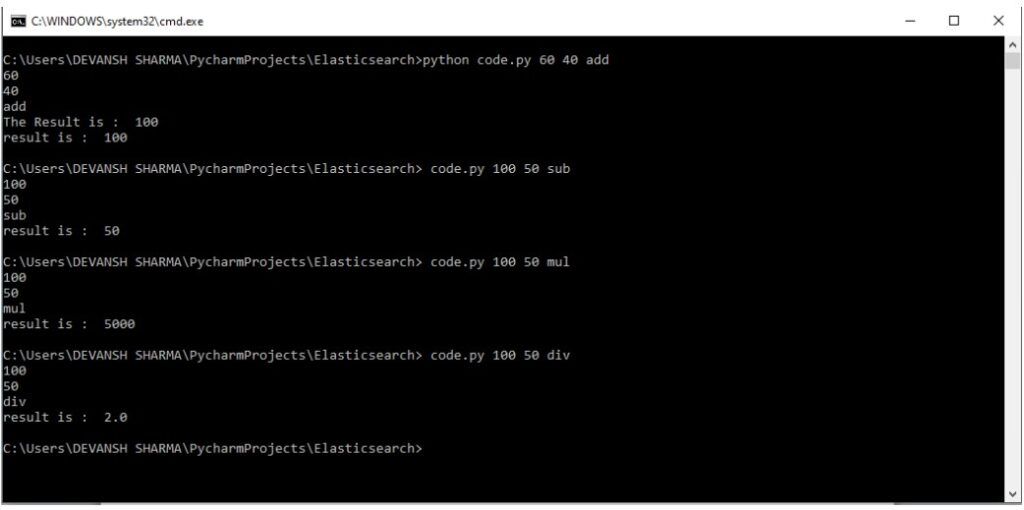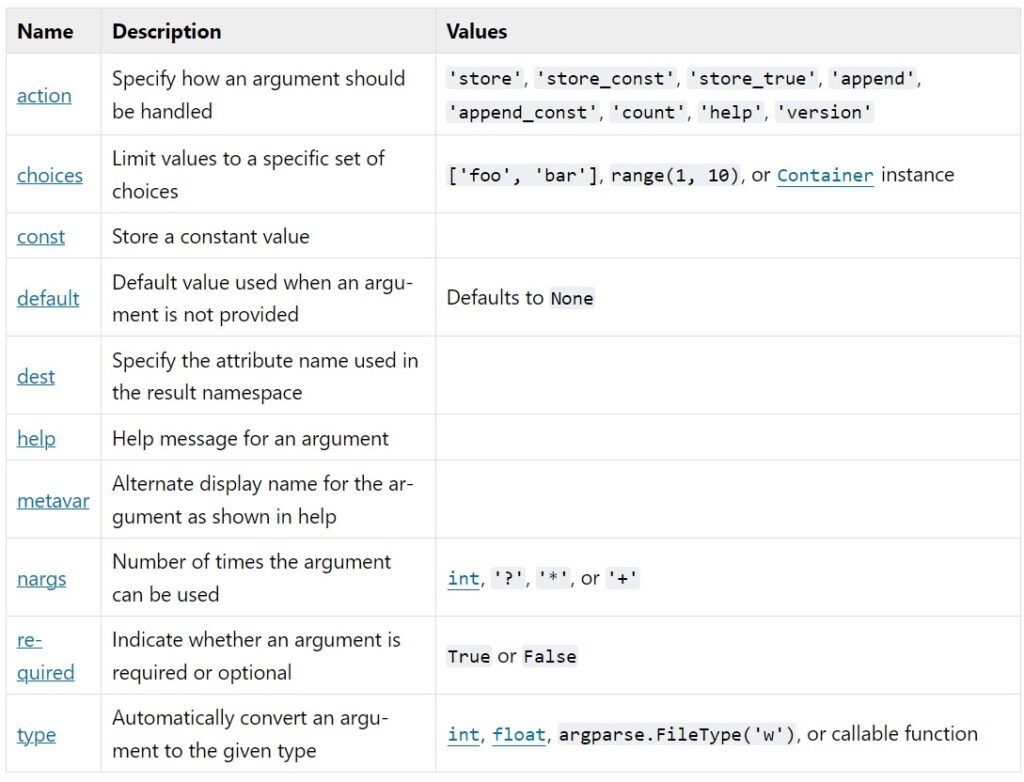Python ‘argparse’ Library
Table Of Contents:
- What Is An ‘argparse’ Library?
- Why Do We Use ‘argparse’ Library?
- Syntax Used In ‘argparse’ Library?
- Parameters Passed To add_argument() Method.
- Example Of ‘argparse’ Library?
(1) What Is An ‘argparse’ Library?
- ‘argparse’ library is a command line parsing module used while creating a user-friendly command line interface programming.
- When you want your program to accept command line arguments from the command prompt, that time you will use ‘argparsr’ library.

(2) Why Do We Use ‘argparse’ Library ?
- To accept command line input as an argument we can use the ‘argparse’ library.
- By using the ‘argparse’ library we can program to accept the command line argument as an input parameter.

(3) Syntax Used In ‘argparse’ Library ?
- Follow the below commands to use ‘argparse’ library.
Import Library:
import argparseCreate An Object Of Argument Parser:
parser = argparse.ArgumentParser()Define The Variables To Store Input Arguments:
parser.add_argument("num1", help = "first number")
parser.add_argument("num2", help = "second number")
parser.add_argument("operation", help = "operation") Runs The Parser:
args = parser.parse_args() Print The Input Values:
print(args.num1)
print(args.num2)
print(args.operation) Stores The Input Values:
n1 = int(args.num1)
n2 = int(args.num2) Perform The Operations On Input Data:
if args.operation == "add":
result = n1 + n2
print("The Result is : ",result)
elif args.operation == "sub":
result = n1 - n2
elif args.operation == "mul":
result = n1 * n2
elif args.operation == "div":
result = n1 / n2
else:
print("Unmatched Argument")
print("result is : ",result) Call The Python File Name With Input Arguments.

Analysis:
- First, To the code.py file we have passed three arguments, 100, 50 and sub.
- Second we are displaying the input values in the command line screen.
- Third we are doing the operation.
(4) Parameters Passed To ‘add_argument’ method.
- Follow the below commands to use ‘argparse’ library.


